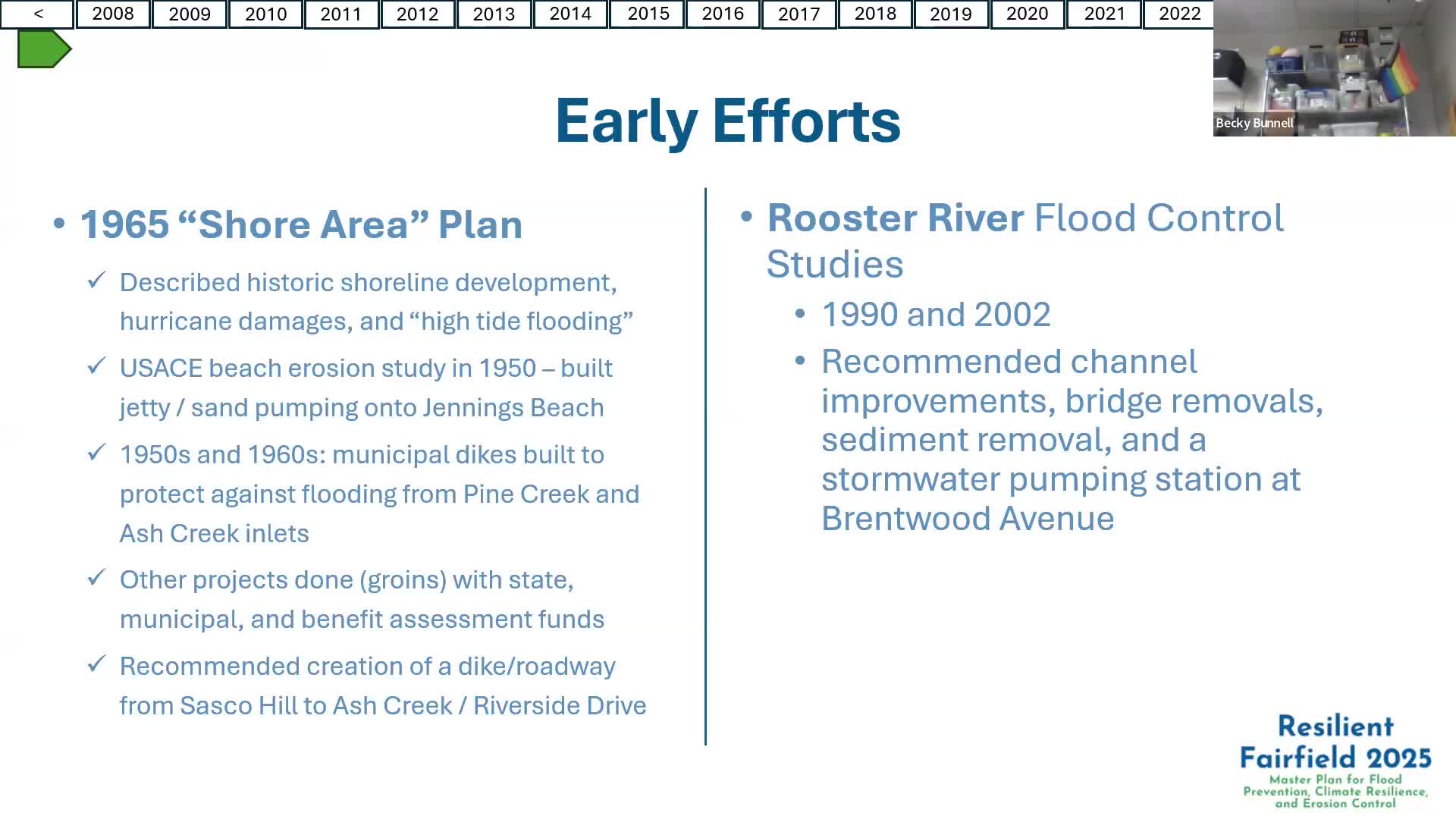Connecticut town updates hazard mitigation plan post-hurricane funding boost
March 02, 2025 | Fairfield, Fairfield, Connecticut
This article was created by AI summarizing key points discussed. AI makes mistakes, so for full details and context, please refer to the video of the full meeting. Please report any errors so we can fix them. Report an error »

The recent special meeting of the Flood Protection, Climate Resilience & Erosion Control Board in Fairfield, Connecticut, highlighted the town's ongoing efforts to address flood mitigation and climate resilience. The discussions underscored the historical context of flood control measures in the area, tracing back to significant developments in the 1950s and 1960s. During this period, numerous flood control structures were built, which played a crucial role in reducing flood damage.
The meeting emphasized the importance of past studies, particularly those conducted on the Rooster River in the 1990s, which recommended various improvements such as bridge replacements and sediment removal. These historical insights serve as a foundation for current and future flood mitigation strategies, illustrating how past experiences inform present actions.
A key focus of the meeting was the town's hazard mitigation plan, first developed in 2005 and updated every five years. This plan is essential for securing funding from FEMA for flood-related projects. The impact of hurricanes Irene and Sandy in 2011 and 2012 was also discussed, as these events prompted a significant increase in funding for flood mitigation efforts. The tragic consequences of these storms, while devastating, led to a renewed commitment to enhancing the town's flood resilience.
The Flood Erosion Control Board, which preceded the current board, initiated a comprehensive plan to address flood mitigation in coastal areas. This plan includes various segments aimed at improving flood protection, reflecting a proactive approach to managing the risks associated with climate change and rising sea levels.
In conclusion, the meeting served as a reminder of the importance of historical context in shaping current flood protection strategies. As Fairfield continues to develop its plans for climate resilience, the lessons learned from past events will be crucial in guiding future actions and securing necessary funding to protect the community from flooding risks. The board's ongoing efforts signal a commitment to safeguarding the town against the challenges posed by climate change.
The meeting emphasized the importance of past studies, particularly those conducted on the Rooster River in the 1990s, which recommended various improvements such as bridge replacements and sediment removal. These historical insights serve as a foundation for current and future flood mitigation strategies, illustrating how past experiences inform present actions.
A key focus of the meeting was the town's hazard mitigation plan, first developed in 2005 and updated every five years. This plan is essential for securing funding from FEMA for flood-related projects. The impact of hurricanes Irene and Sandy in 2011 and 2012 was also discussed, as these events prompted a significant increase in funding for flood mitigation efforts. The tragic consequences of these storms, while devastating, led to a renewed commitment to enhancing the town's flood resilience.
The Flood Erosion Control Board, which preceded the current board, initiated a comprehensive plan to address flood mitigation in coastal areas. This plan includes various segments aimed at improving flood protection, reflecting a proactive approach to managing the risks associated with climate change and rising sea levels.
In conclusion, the meeting served as a reminder of the importance of historical context in shaping current flood protection strategies. As Fairfield continues to develop its plans for climate resilience, the lessons learned from past events will be crucial in guiding future actions and securing necessary funding to protect the community from flooding risks. The board's ongoing efforts signal a commitment to safeguarding the town against the challenges posed by climate change.
View full meeting
This article is based on a recent meeting—watch the full video and explore the complete transcript for deeper insights into the discussion.
View full meeting
